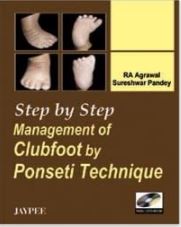
The Ponseti technique is a widely used and effective method for the treatment of clubfoot, a congenital deformity where a baby’s foot is turned inward and downward. Named after Dr. Ignacio Ponseti, who developed the technique in the 1940s, it has become the standard of care for managing clubfoot in infants.
The Ponseti technique involves a series of gentle manipulations and casting of the affected foot:
Manipulation: The first step is to gently manipulate the foot into a more corrected position. The goal is to gradually move the foot into a more normal alignment.
Casting: After the initial manipulation, a cast is applied to hold the foot in the corrected position. The cast is typically changed every week or so as the foot progresses toward the correct alignment. The casting process continues until the foot is in the desired position.
Achilles Tenotomy: In some cases, a minor surgical procedure called Achilles tenotomy may be performed. This involves a small incision to release tension in the Achilles tendon, allowing further correction of the foot position. This is a relatively simple and quick procedure that is often done in an outpatient setting.
Bracing: Once the desired correction is achieved, the infant is placed in special boots attached to a bar (known as a foot abduction brace). This helps maintain the corrected position and prevents relapse. The child typically wears the brace for several months, including during nighttime sleep.















